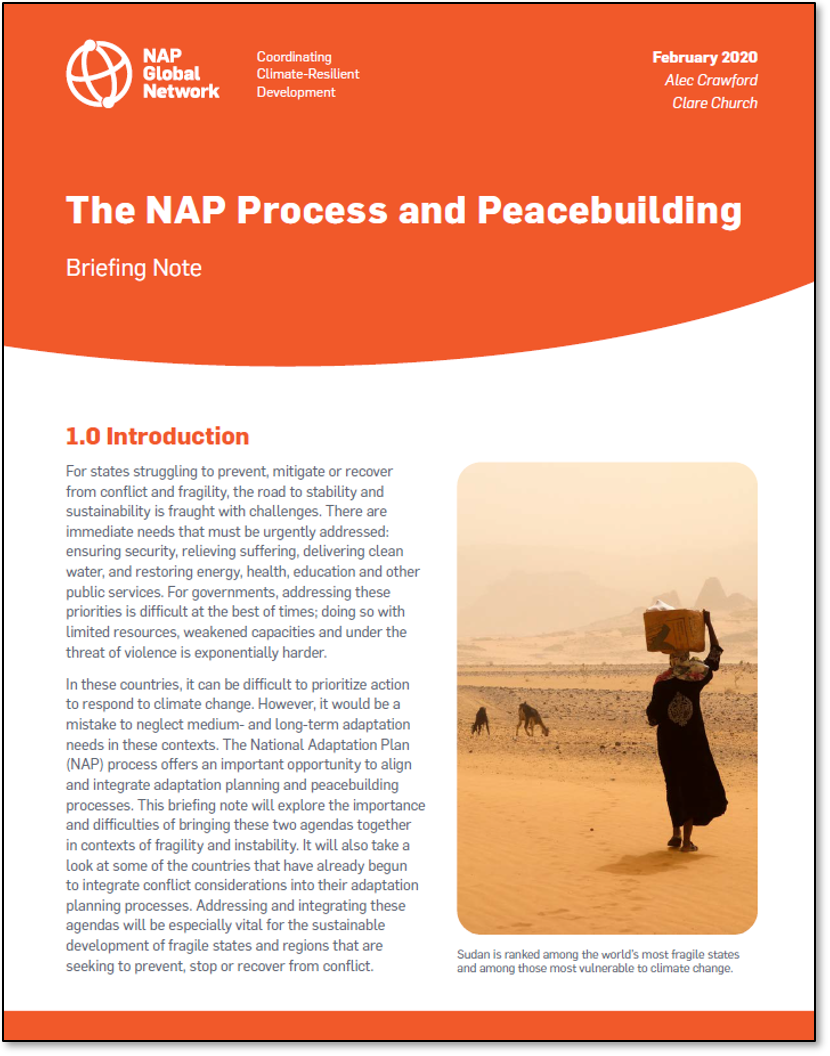How National Adaptation Planning Can Help Build Peace
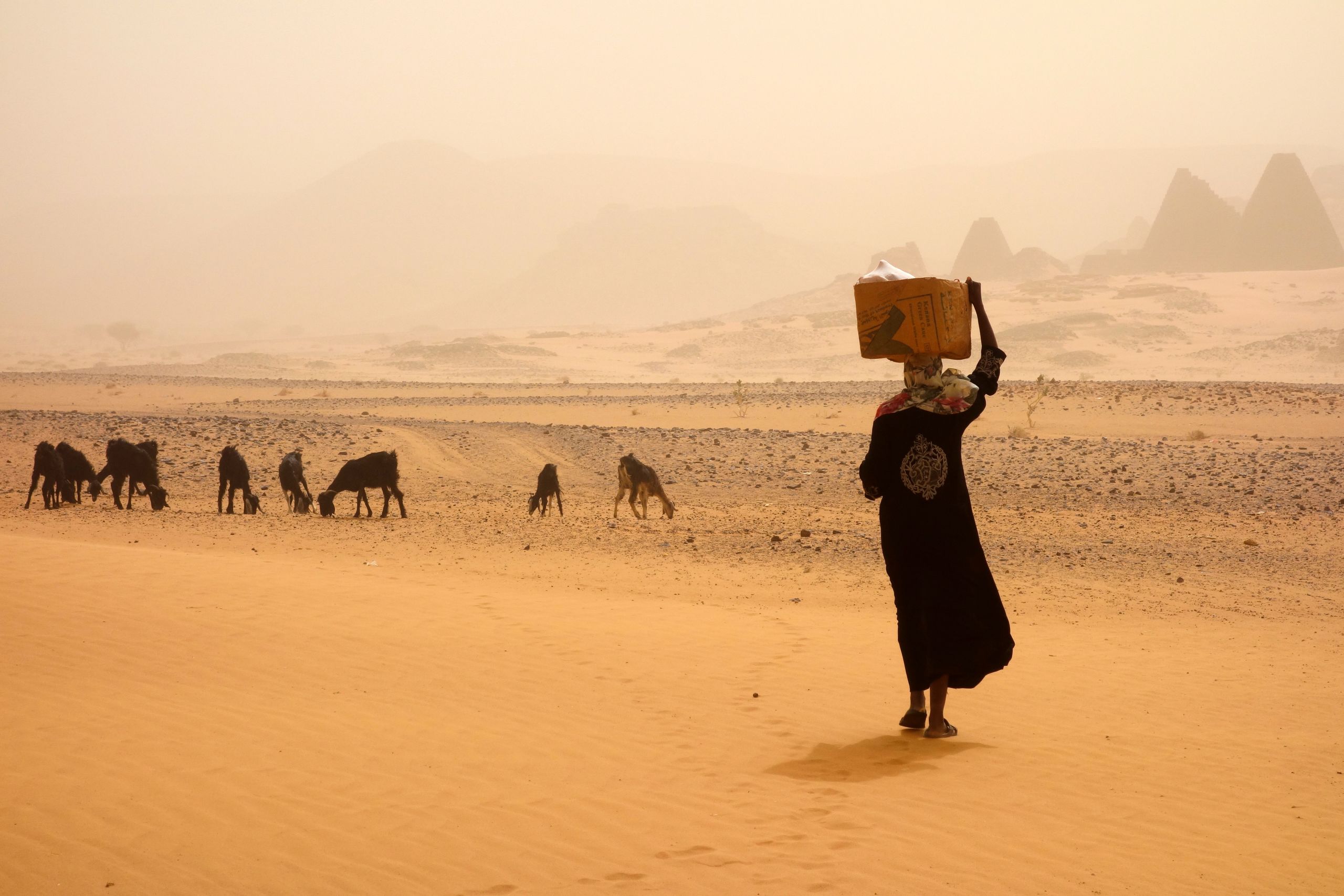
INTRODUCTION
In Nigeria’s Benue state, livestock herders have two options when drought strikes.
Option One: They can stay where they are, threatening the health of their herd as water sources dry up and pastures turn arid.
Option Two: They can travel elsewhere in search of fresh pasture, bringing them into competition with farming communities over scarce water and land resources.
Unfortunately, it has been this second option that has remained a persistent source of violence in Benue and its neighbouring states. In the last decade alone, more than 10,000 people have been killed in Nigeria as a result of these conflicts between pastoralists and farmers.
The 2019 Fragile States Index ranks Nigeria as one of the world’s most fragile states; it continues to struggle with poverty, terrorism, the provision of quality public services, a weakened state security apparatus, and factionalized elites. It is also among the most vulnerable to climate change and least prepared to adapt, according to the Notre Dame Global Adaptation Initiative (ND-GAIN). It is an ongoing example of how the crises of conflict and climate change vulnerability can compound one another—each reinforcing the severity of the other.
Knowledge of this dynamic isn’t new–for years, policy-makers and practitioners have been drawing attention to the role that climate change can play as a “threat multiplier.” And yet, policy-makers and experts largely continue to address the two crises of conflict and climate change separately.
To build stability and recover from violence in these states, greater effort must be made to align peacebuilding and climate change adaptation agendas. The National Adaptation Plan (NAP) process presents one such opportunity for this to happen.
THE CONFLICT–CLIMATE CONNECTION
The two crises of conflict and climate change vulnerability are inextricably linked. When these challenges aren’t approached together, any failure to meaningfully address one issue can obstruct progress in the other.
Historic or ongoing conflict can jeopardize a country’s ability to adapt to the adverse impacts of climate change: staff working on adaptation may be killed or have fled; climate data and information systems may have been destroyed; and financing may be drastically reduced. Adaptation programming may be halted completely, as was the case for UNDP in Mali in 2012 with the outbreak of conflict linked to Islamist terrorist groups in the north of the country.
At the same time, vulnerability to climate change can aggravate socio-political tensions. In Benue, drought linked to a changing climate jeopardized water and land availability, driving competition between opposing groups over the remaining resources.
Climate change vulnerability can also contribute to an increase in criminal activities, as those previously dependent on natural resources look to alternative livelihoods for income. A significant and growing portion of the population in the Sahel region, for example, is young, and for many, their livelihoods are climate-dependent. As climate change undermines these farming and herding livelihoods, many have looked to secure livelihoods elsewhere—opening them up to recruitment by terrorist organizations and criminal networks.
Climate vulnerability and conflict often share root causes. A history of inequality, poverty, and weak institutions can hamper a country’s ability to respond to shocks and stresses—climate-related or otherwise. Adaptation efforts aimed at the root causes of vulnerability can, therefore, have potential co-benefits for peacebuilding and vice versa.
The presence of conflict may inhibit governments’ ability to advance climate change adaptation planning and implementation, as they understandably invest in more urgent priorities such as delivering clean water and restoring public services. But a failure to help individuals, households, and communities to cope and thrive in the face of the adverse impacts of climate change can also hinder a government’s ability to maintain or build peace. Concerted action on both climate change adaptation and peacebuilding is needed to put an end to this cycle.
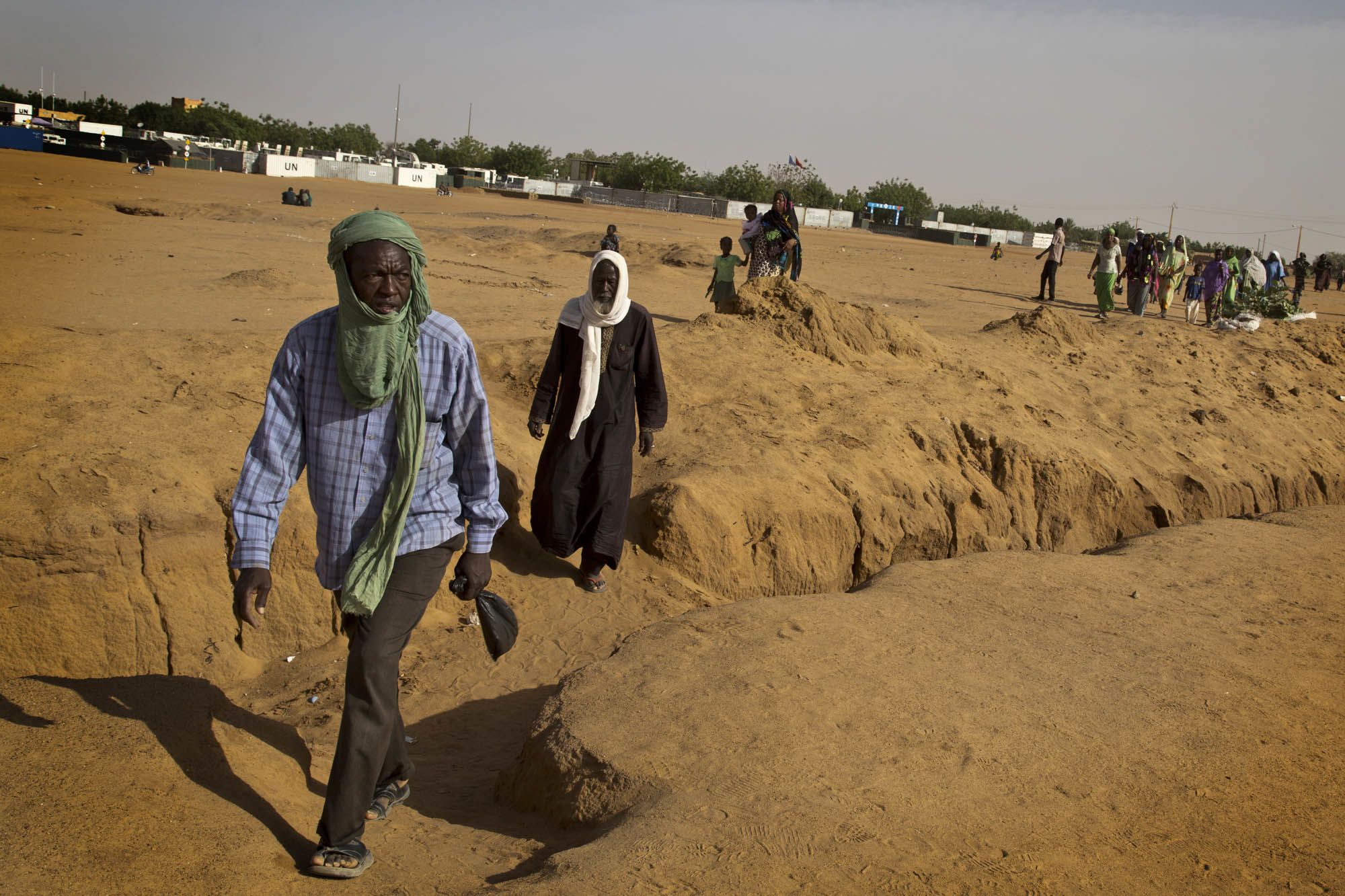
ALIGNING THE AGENDAS
Effective national climate change adaptation shares many attributes with successful peacebuilding: both are country-driven, targeted at root causes, participatory, and gender-responsive; they involve multiple levels of governance; and they are planned and implemented in response to medium- and long-term priorities. Given their many intersections, it’s clear that we must align these agendas and planning processes.
One way to accomplish this is through the National Adaptation Plan (NAP) process, a strategic process that enables countries to identify their medium- and long-term priorities for adapting to climate change, and puts in place the systems and capacities needed to make adaptation an integral part of a country’s development planning, decision making, and budgeting. By integrating climate change adaptation into a country’s medium- and long-term development plans in a participatory, inclusive, country-driven, and holistic manner, the NAP process can be designed in a way that addresses many of a country’s core and overlapping vulnerabilities.
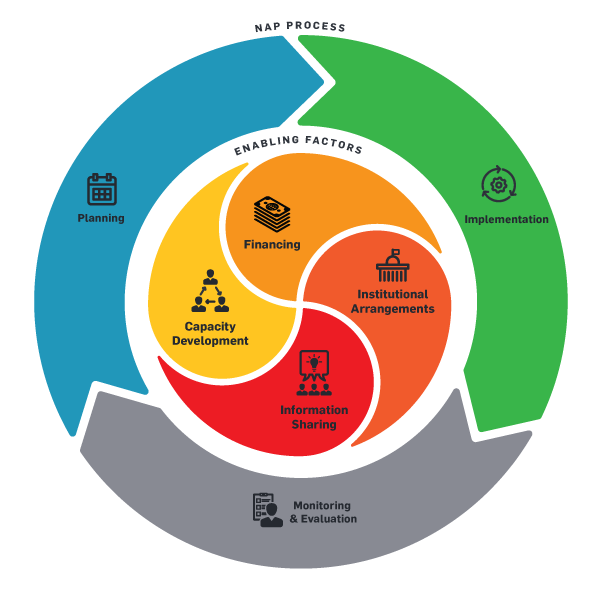
The NAP process can support peacebuilding in a number of ways, including:

NAP process and peacebuilding timelines often intersect.
The impacts of violent conflict are widespread and long-lasting; on average, it takes 22 years for a country to recover from a major conflict. Successful peacebuilding involves addressing immediate post-conflict needs, but also creating strong, resilient institutions. The NAP process focuses on identifying and implementing adaptation priorities to reduce vulnerability in the medium- to long-term. As such, the NAP process can be aligned with both near- and longer-term peacebuilding processes—from the identification of immediate post-conflict priorities through to the prolonged recovery period.

The NAP process can encourage dialogue among diverse stakeholders.
The NAP process emphasizes approaches that are participatory, transparent, and that integrate gender considerations. By including traditionally marginalized groups in national adaptation planning, these groups will be able to ensure their voices, needs, and grievances are known and addressed. This will not only contribute to the effectiveness of adaptation, but can also support peacebuilding by promoting trust and dialogue around a less politically sensitive topic among previously opposing groups.

The NAP process has considerable political and financial momentum.
More and more countries are prioritizing the NAP process as a key mechanism to build institutional capacity and enhance resilience. As of October 2019, 120 out of 153 developing countries had undertaken activities related to their NAP process – an increase of 29 countries from 2018. And while financing adaptation in fragile states has traditionally been difficult, there is an expanding pot of money from which governments can access support. Some fragile states have already successfully accessed adaptation funding; for example, in 2019, the Green Climate Fund (GCF) approved USD 3 million in readiness funding to Somalia to support pastoralist communities address climate risks. Funding earmarked for adaptation—from international climate funds like the GCF, bilateral donors, or the private sector—can provide already-stretched national budgets with the resources needed to reduce climate vulnerability and risk.
Some countries are already using the NAP process as a tool to integrate peace and conflict considerations into their adaptation efforts.
NAP PROCESSES AND PEACEBUILDING IN PRACTICE
The NAP Global Network examined the 18 NAP documents submitted to the UNFCCC (as of February 2020) in our recent briefing note, The NAP Process and Peacebuilding. Here are three examples of the trends we saw regarding how conflict and peacebuilding are being addressed in these National Adaptation Plans.
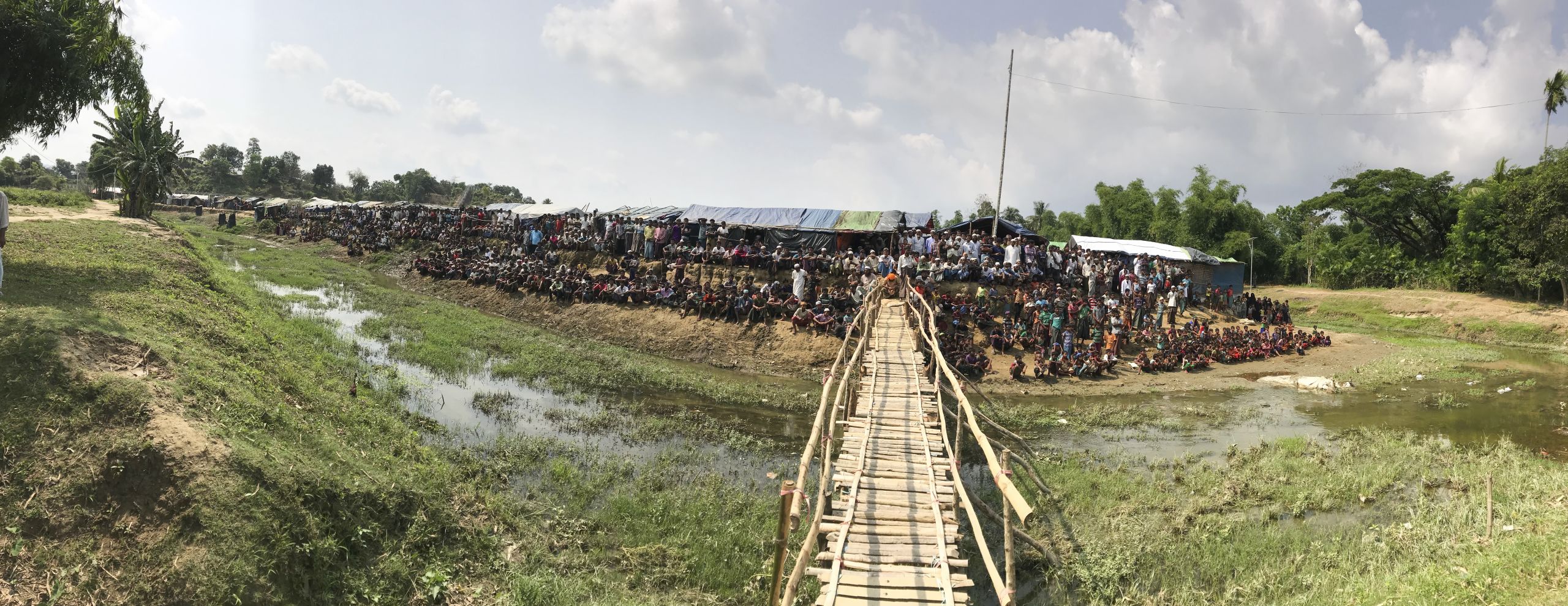
SUDAN
Many of the NAP documents submitted to the United Nations Framework Convention on Climate Change (UNFCCC) recognize that—if left unaddressed—climate change could act as a driver of conflict. In this framing, effective adaptation planning is positioned as a means of preventing conflict.
Sudan’s NAP document, for example, calls attention to the conflicts—both historic and ongoing—between pastoralist and farming communities within its borders. It states that in the absence of effective adaptation action, competition over scarce land and water resources could intensify, further exacerbating these existing tensions. Among the adaptation actions it prioritizes, the NAP document subsequently highlights the importance of sustainable land-management and dispute-resolution mechanisms as key tools for addressing these conflict risks.
The NAP documents from Cameroon, Togo, Kenya, Ethiopia, Cameroon, and Burkina Faso make similar connections.
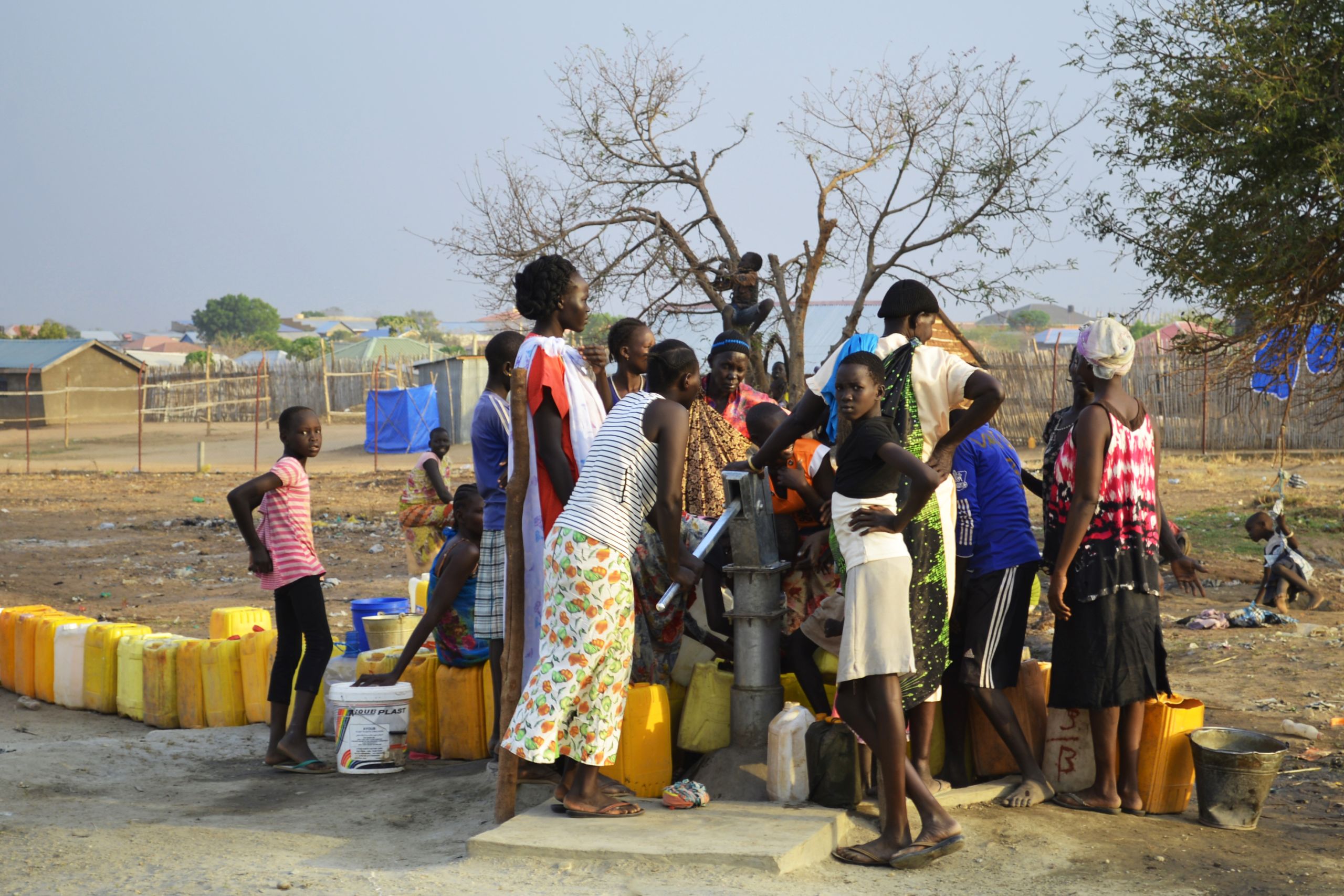
COLOMBIA
In Latin America, the NAP documents from Brazil, Colombia, and Chile all recognize the potential for tensions to emerge around increasingly scarce water supplies—and the need for increased conflict management to mitigate these risks.
In Colombia, climate-induced changes in the water cycle are expected to lead to water shortages and subsequent impacts on household use, sanitation, and health. This could, in turn, lead to potential conflicts between the population and the state. The NAP process is presented as a mechanism for identifying potential conflicts and planning for their prevention.
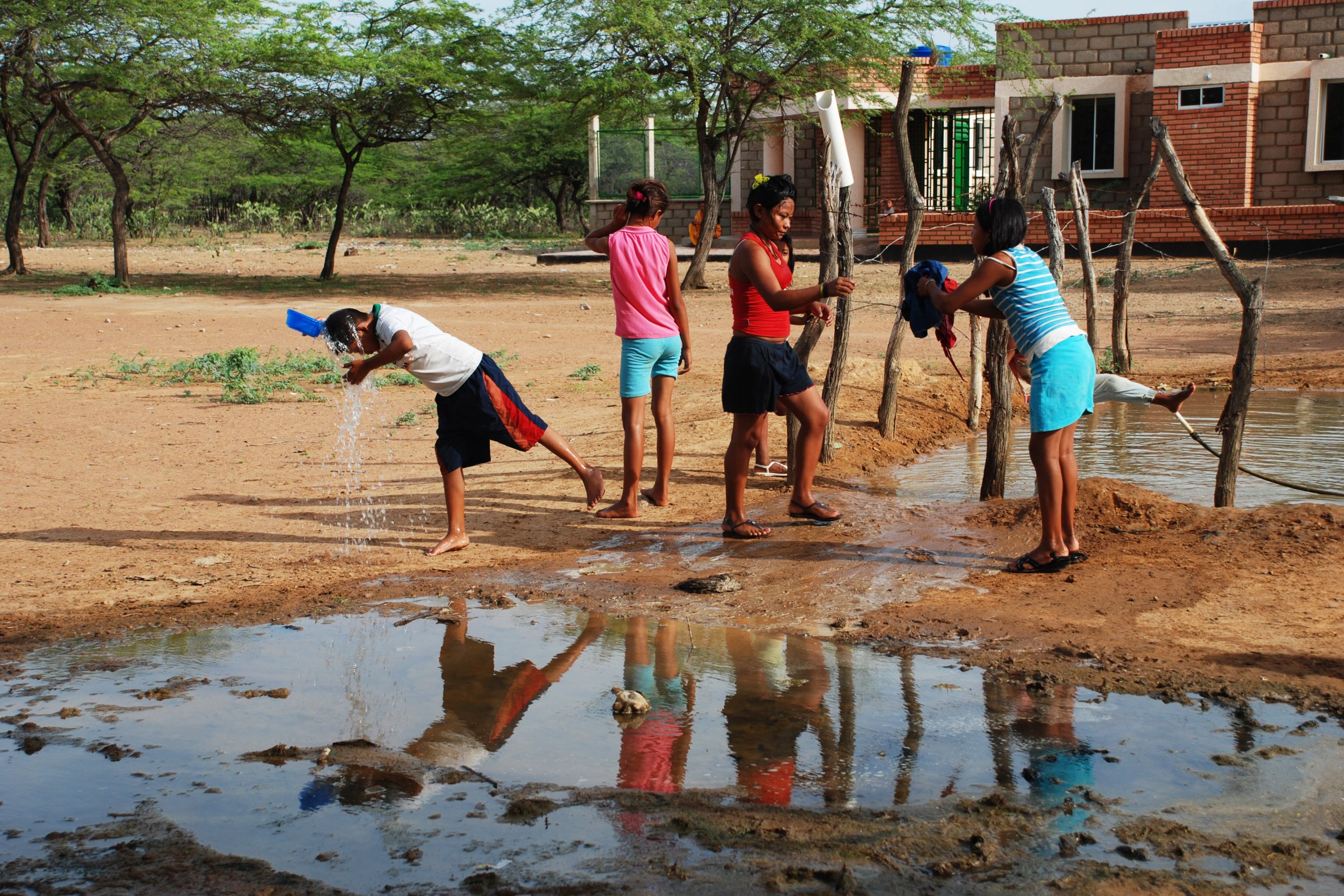
PALESTINE
Though less common, some of the NAP documents submitted to the UNFCCC identify conflict as a significant source of climate vulnerability that limits available adaptation options. In these documents, pre-existing conflicts must be addressed to allow countries and communities to meaningfully adapt to climate change.
The most clear-cut example of this is the Palestinian NAP, which is perhaps the most responsive to conflict of the documents we examined. The Palestinian NAP states explicitly that the ongoing conflict with Israel continues to constrain Palestinians’ ability to adapt and contributes to climate vulnerabilities across both Gaza and the West Bank. For example, while olive and vegetable production could decrease as a result of climate change, this vulnerability is exacerbated by the number of agricultural facilities destroyed by Israeli airstrikes in 2008, 2012, and 2014. In this sense, adaptation options are determined based on the status of the ongoing conflict.
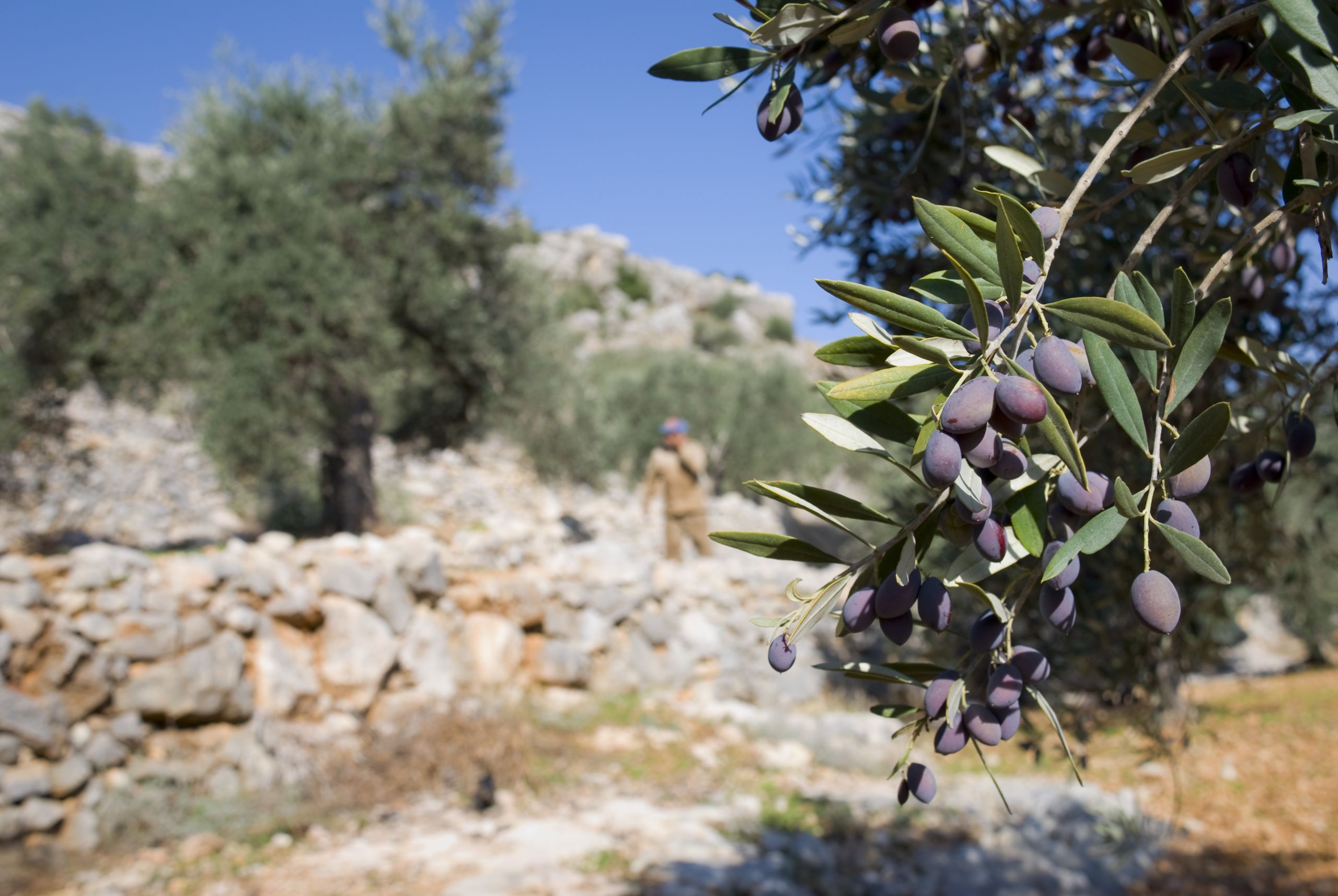
Fragility and climate vulnerability rankings for countries that have submitted their NAP document to NAP Central
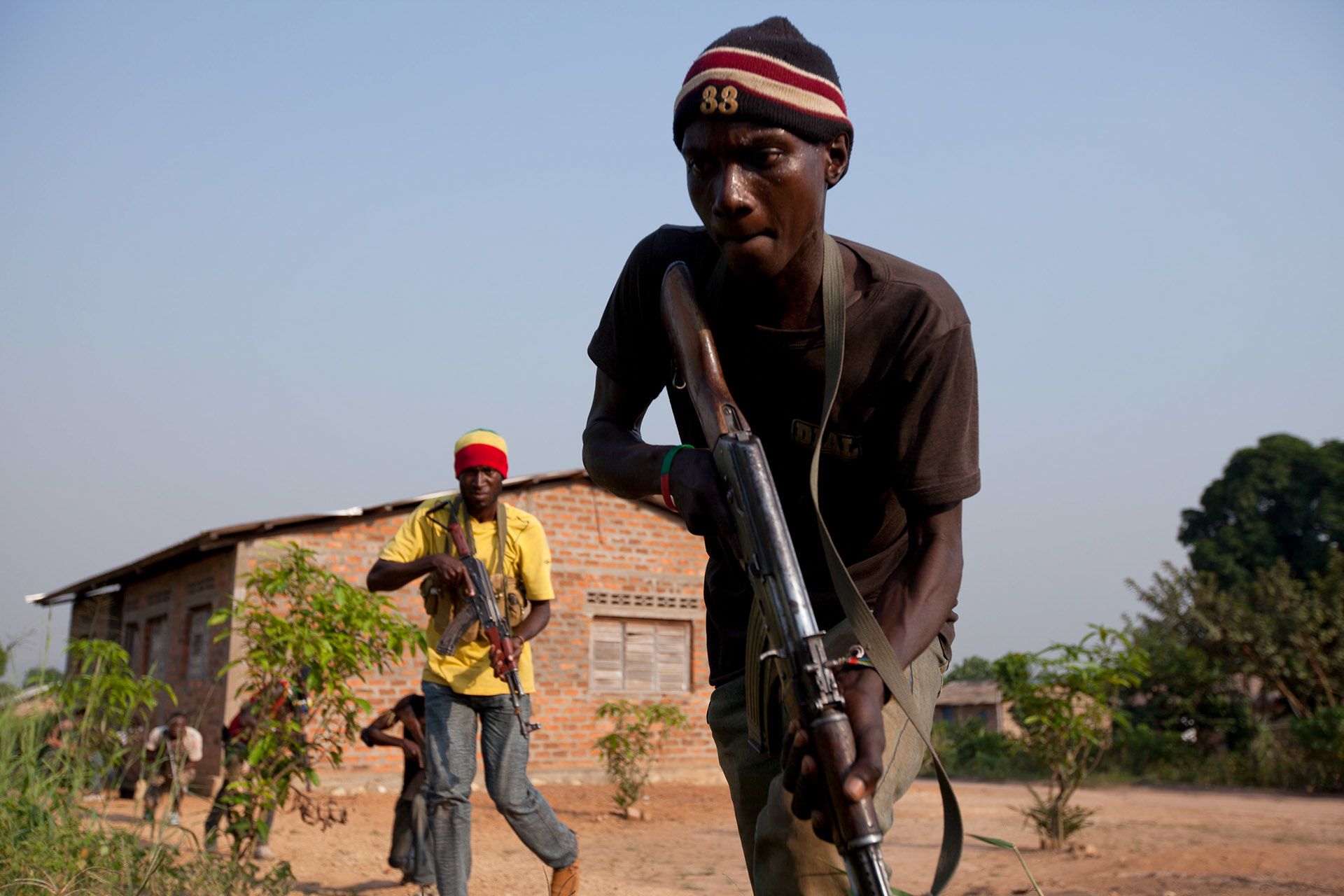
NEXT STEPS FOR LINKING NAPS AND PEACEBUILDING
The mutually reinforcing crises of climate change vulnerability and conflict present a key threat to sustainable development, one that has been well known for years. For countries struggling with climate change and conflict, bringing together the agendas of peacebuilding and climate change adaptation is not just good practice: it is imperative.
Read more in our new report "The NAP Process and Peacebuilding"
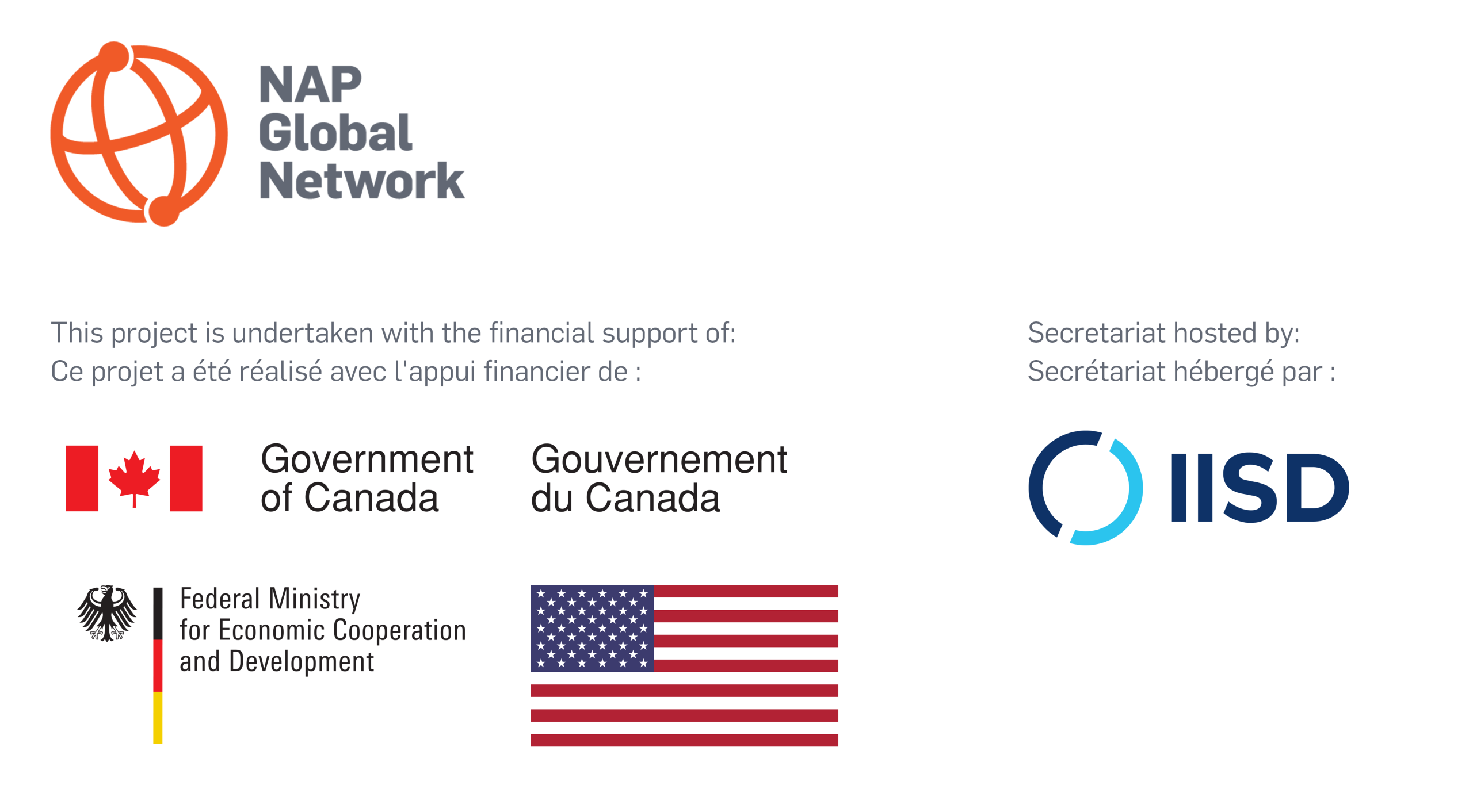
Any opinions stated in this blog post are those of the authors and do not necessarily reflect the policies or opinions of the NAP Global Network, its funders or Network participants.
